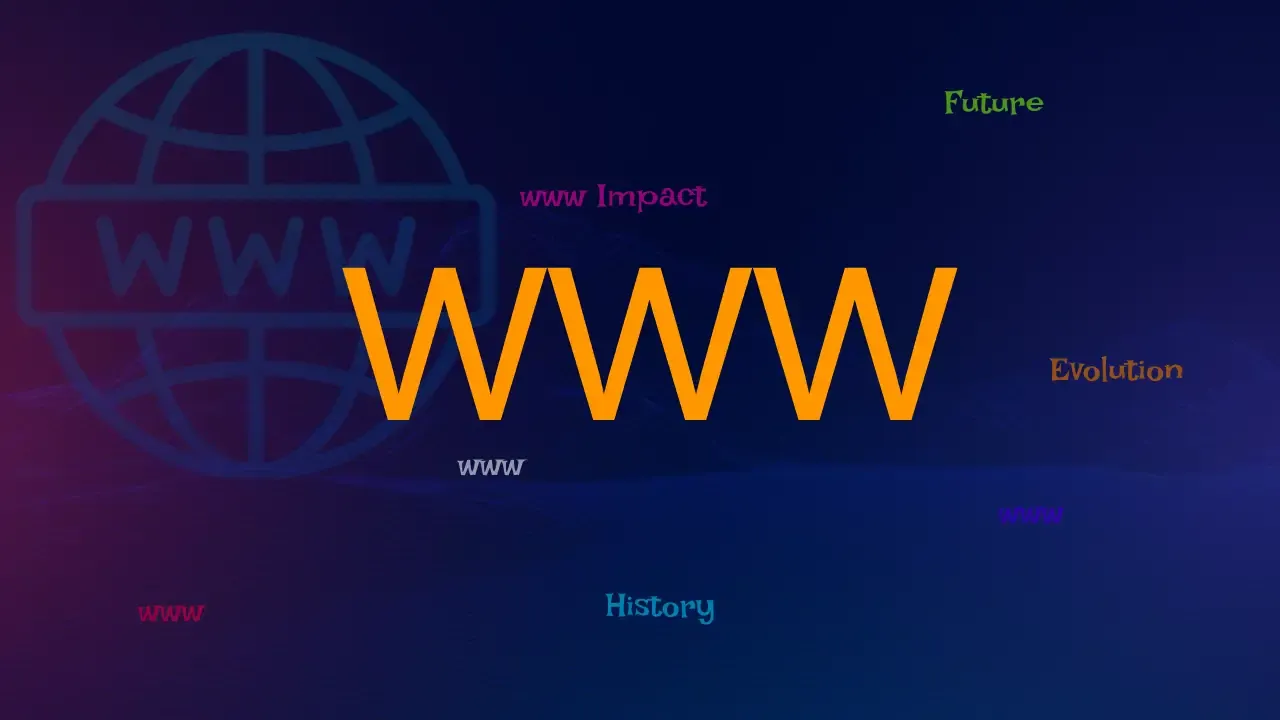All About the World Wide Web: History, Components, and Future
In today's digital era, the World Wide Web (WWW) is the backbone of online connectivity, revolutionizing how we access information, communicate, and interact globally. From e-commerce to social networking, the WWW has transformed nearly every aspect of modern life.
1. Introduction to the World Wide Web
The World Wide Web (WWW) is a global system of interconnected digital resources and documents accessible via the Internet. It enables users to navigate web pages using hyperlinks, view multimedia content, and interact with dynamic applications. The WWW operates on a client-server model, with web browsers retrieving content from servers using standardized protocols.
Learn more about the WWW at W3C's official page.
2. History of the World Wide Web
The WWW was conceptualized by Sir Tim Berners-Lee in 1989 while working at CERN. His vision was to create a system for sharing information seamlessly across the globe. By 1990, he developed the first web browser, server, and the foundational technologies—HTTP, HTML, and URLs—that power the web today.
| Year | Event |
|---|---|
| 1989 | Tim Berners-Lee proposes the World Wide Web at CERN. |
| 1990 | First web browser and server developed, introducing HTTP and HTML. |
| 1993 | Mosaic, the first widely popular web browser, is released. |
| 1994 | World Wide Web Consortium (W3C) is founded to standardize web technologies. |
For a detailed timeline, visit W3C's History of the Web.
3. Key Components of the World Wide Web
The WWW relies on several core components that work together to deliver seamless online experiences:
| Component | Description |
|---|---|
| Web Pages | Documents written in HTML and styled with CSS, accessible via web browsers. |
| Hyperlinks | Links that connect web pages, enabling navigation across the web. |
| Web Servers | Computers that store and deliver web content using protocols like HTTP/HTTPS. |
| Web Browsers | Software like Chrome, Firefox, or Safari used to access and render web pages. |
| Internet Protocol (IP) | The communication protocol enabling data transfer over the Internet. |
| URLs | Uniform Resource Locators that specify the address of web resources. |
4. Evolution of the World Wide Web
The WWW has evolved through distinct phases, each introducing new capabilities and user experiences:
| Stage | Description |
|---|---|
| Web 1.0 (1990s) | Static web pages with limited interactivity, primarily used for information sharing. |
| Web 2.0 (2000s) | Dynamic, user-generated content with social media, blogs, and interactive platforms like YouTube. |
| Web 3.0 (Emerging) | A semantic, decentralized web leveraging AI, blockchain, and machine-readable data for personalized experiences. |
Read more about Web 3.0 at Forbes.
5. Impact of the World Wide Web
The WWW has profoundly shaped modern society, driving innovation and connectivity:
- Communication: Platforms like email and social media have transformed how we connect globally.
- Commerce: E-commerce giants like Amazon have redefined retail.
- Education: Online learning platforms like Coursera provide global access to education.
- Entertainment: Streaming services like Netflix have revolutionized media consumption.
- Challenges: Issues like misinformation, privacy breaches, and digital divides persist.
6. Challenges Facing the World Wide Web
Despite its benefits, the WWW faces significant challenges:
- Data Privacy: Breaches and unauthorized data collection raise concerns. Learn about privacy at EFF.
- Cybersecurity: Threats like hacking and phishing are prevalent. Explore solutions at CISA.
- Misinformation: False information spreads rapidly, impacting public trust.
- Digital Inequality: Limited access in underserved regions hinders inclusivity.
7. Future of the World Wide Web
The future of the WWW lies in leveraging cutting-edge technologies:
- Artificial Intelligence: AI will enhance personalization and automation.
- Blockchain: Decentralized systems will improve security and trust.
- Quantum Computing: Faster processing will enable complex applications.
- Accessibility: Efforts to bridge the digital divide will ensure inclusivity.
Discover future trends at World Economic Forum.
8. Conclusion
The World Wide Web is a transformative force that has reshaped communication, commerce, education, and entertainment. By understanding its history, components, impact, and challenges, we can harness its potential to build a secure, inclusive, and innovative digital future.
For further reading, visit W3C and Internet Society.

Comments
Post a Comment